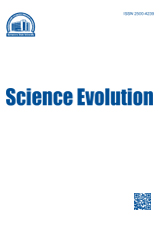Россия
Россия
Россия
Россия
ГРНТИ 27.01 Общие вопросы математики
ГРНТИ 31.01 Общие вопросы химии
ГРНТИ 34.01 Общие вопросы биологии
A model of queueing theory is proposed that describes a queueing system with three parameters, which has important practical applications. The model is based on the continuous time Markov process with a discrete number of states. The model is formalized by a probabilistic space in which the space of elementary events is a set of inconsistent states of the queueing system; and the probabilistic measure is a probability distribution corresponding to a set of elementary events, that is, each elementary event is associated with the probability of the system staying in this state, for each fixed time moment. The model is represented by a system of ordinary differential equations, compiled by methods of queueing theory (Kolmogorov equations). To find the solution of the system of equations, the method of generating functions is used. For the generating function, a partial differential equation is obtained. Finding the generating function completes the construction of a probability space. The latter means that for any random variables and functions defined on the resulting probability space, one can find their probabilistic characteristics. In particular, analytical expressions of the moments (mathematical expectations and variances) of random functions that depend on time are obtained. The peculiarity of finding a solution is that it is obtained not from the probability distribution, but directly from the partial differential equation, which represents a system of ordinary differential equations. For the probability distribution, the solution was found by a combinatorial method, which made it possible to significantly reduce the computations. To apply the formulas in engineering calculations, we consider the stationary case, to which a considerable simplification of the calculations corresponds. A relationship between a system of differential equations and a polynomial distribution known in probability theory is shown. The results are used in the analysis of the reliability of the operation of scalable computing systems; graphical implementation is shown
Queuing theory, Markov process, probability distribution, moments, solution of systems of differential equations, generating functions, method of characteristics
1. 1. Vishnevskiy V.M. and Semenova O.V. Sistemy pollinga: teoriya i primenenie v shirokopolosnykh besprovodnykh setyakh [Polling systems: theory and application in broadband wireless networks]. Moscow: Technosphere Publ., 2007. 309 p.
2. 2. Ivanova S.A. and Pavsky V.A. Solution of stochastic differential equations of the models of queueing theory by the method of generating function. Science Evolution, 2016, vol. 1, no. 1, pp. 53-62.
3. 3. Pavsky V.A. and Pavsky K.V. Stochastic simulation and analysis of the operation of computing systems with structural redundancy. Optoelectronics, instrumentation and data processing, 2014, vol. 50, no. 4, pp. 363-369.
4. 4. Pavsky V.A. Teoriya veroyatnostey i matematicheskaya statistika [Theory of Probability and Mathematical Statistics]. Kemerovo: KemTIPP Publ., 2014. 238 p.
5. 5. Saaty T. Elements of queueing theory with application. New York: Dover publications, 1961. 436 p.
6. 6. Gnedenko B.V. and Kovalenko I.N. Vvedenie v teoriyu massovogo obsluzhivaniya [Introduction to queueing theory]. Moscow: Editorial URSS Publ., 2005. 400 p.
7. 7. Kleinrock L. Teoriya massovogo obsluzhivaniya [Queueing Theory]. Moscow: Mechanical Engineering Publ., 1979. 432 p.
8. 8. Tutubalin V.N. Teoriya veroyatnostey i sluchaynykh protsessov [Theory of Probabilities and Random Processes]. Moscow: MSU Publ., 1992. 400 p.
9. 9. Feller V. Introduction to probability theory and its applications. Moscow: LIBROCOM Publ., 2010. 528 p.
10. 10. Gnedenko V.E. Kurs teorii veroyatnostey [The course in probability theory]. Moscow: LKS Publ., 2007. 448 p.
11. 11. Venttsel’ E.S. and Ovcharov L.A. Teoriya sluchaynykh protsessov i ee inzhenernye prilozheniya [The theory of random processes and its engineering applications]. Moscow: High School Publ., 2000. 480 p.
12. 12. Pavsky V.A. Teoriya massovogo obsluzhivaniya [Queuing Theory]. Kemerovo: KemTIPP Publ., 2008. 116 p.
13. 13. Sveshchnikov A.G. and Tikhonov A.N. Teoriya funktsii kompleksnogo peremennogo [Complex variable theory]. Moscow: Fizmatlit Publ., 2010. 336 p.
14. 14. Khoroshevsky V.G. and Pavsky V.A. Calculating the efciency indices of distributed computer system functioning. Optoelectronics, Instrumentation and Data Processing, 2008, vol. 44, no. 2, pp. 95-104.
15. 15. Ivanova S.A. and Pavsky V.A. Stochastic modeling of protein solution foaming process. Theoretical foundations of chemical engineering, 2014, vol. 48, iss. 6, pp. 848-854. DOI:https://doi.org/10.1134/S0040579514040198.
16. 16. Yustratov V.P., Pavsky V.A., Krasnova T.A., and Ivanova S.A. Mathematical modeling of electrodialysis demineralization using a stochastic model. Theoretical foundations of chemical engineering, 2005, vol. 39, iss. 3, pp. 259 - 262. DOI:https://doi.org/10.1007/s11236-005-0073-9.
17. 17. Li T. Analysis of explicit tau-leaping schemes for simulating chemically reacting systems. Multiscale Model. Simul, 2007, vol. 6, iss. 2, pp. 417-436. DOI:https://doi.org/10.1137/06066792X.
18. 18. Cox D.R. and Smith W.L. Queues. London: Methuen/New York: Wiley, 1961. 180 p.
19. 19. Khoroshevskiy V.G., Pavsky V.A., and Pavsky K.V. Raschet pokazateley zhivuchesti raspredelennykh vychislitel’nykh sistem. [Calculation of survivability of distributed computing systems.] Bulletin of Tomsk State University. Upravlenie, vychislitel’naya tekhnika i informatika [Management, Computer Science and Informatics], 2011, no. 2, pp. 81 - 88.
20. 20. Pavsky V.A. and Pavsky K.V. Matematicheskaya model’ funktsionirovaniya raspredelennykh vychislitel’nykh sistem s otkazami i polnym vosstanovleniem [Mathematical model of functioning of distributed computing systems with failures and full recovery] Materialy 8-go Vserossiyskogo konferentsii po problemam upravleniya [Proceedings of the 8th All-Russian Multiconference on Management Problems], 2015, vol. 3, pp. 49-51










